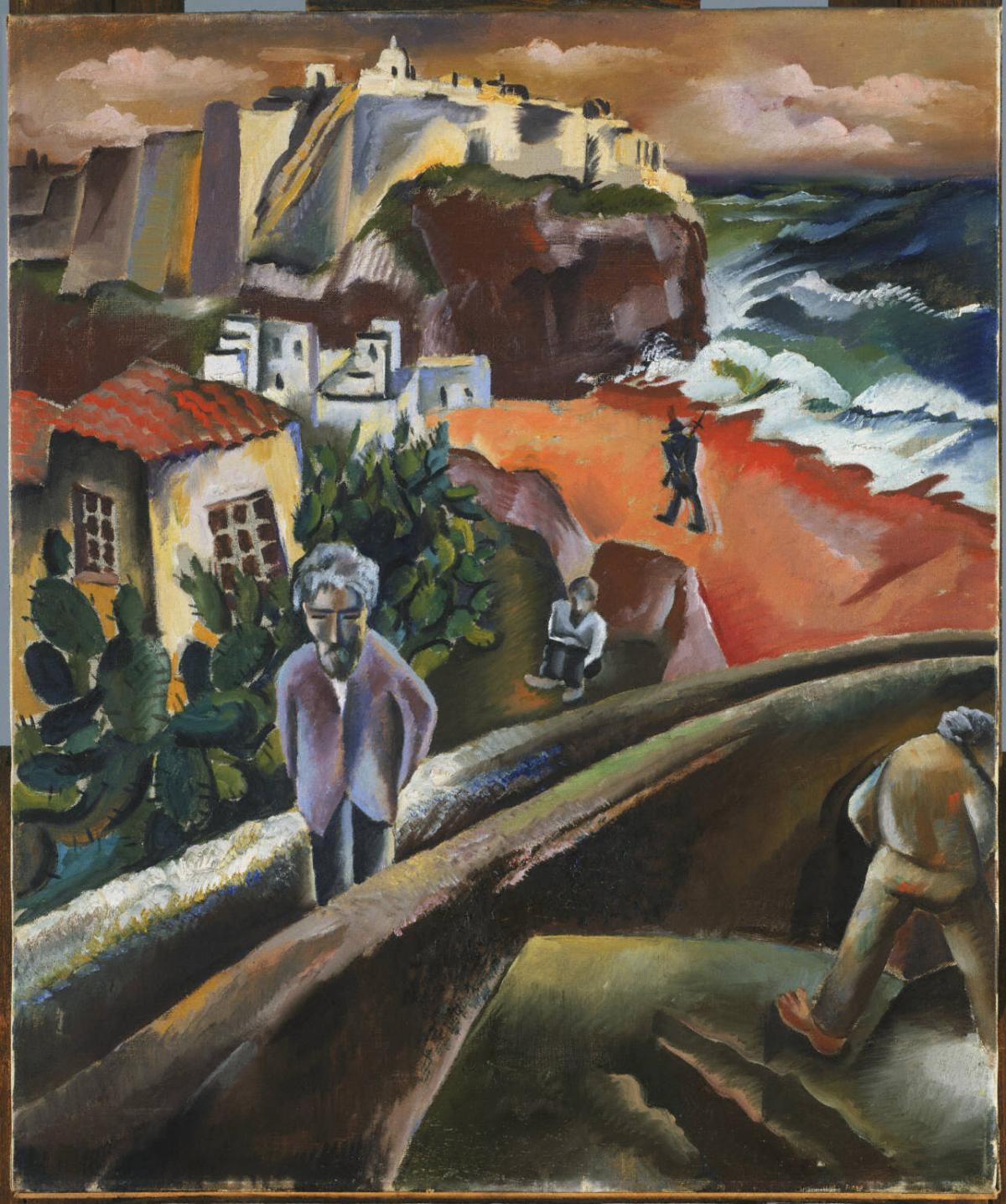Political Exiles
Peppino Mangravite ( ca. 1928 )

Peppino Mangravite created poetic works based upon personal experience and observation filtered through his romantic sensibility. Asserting his independence from family and authority while growing up, Mangravite openly associated with the prisoners under his father’s charge, enjoying the opportunity to converse with independent thinkers. One such prisoner is said to have given him his first art lessons.
Political Exiles was painted around 1928, more than a decade after Mangravite settled in New York. There, he had studied under Robert Henri, and perhaps due to Henri’s influence on the young Mangrative, he chose to paint a subject with tremendous personal significance. The painting’s focus on people ostracized for their political beliefs transcends the personal and becomes an early manifestation of Mangravite’s interest in human rights and non-conformity. It seethes with urgency and commitment.
Prompted by his childhood experiences on Lipari, Political Exiles was a response to prolonged periods of seclusion, displacement, and limited freedom. The rhythmic brushwork, uneven impasto, and rich non-associative colors convey the violent surf, ripping wind, and hot sun. The hilltop citadel and the armed guard policing the beach are looming presences that elicit a sense of claustrophobia. The viewer’s attention is directed toward the foreground and middle distance where three prisoners are isolated physically and psychologically; they seem small and vulnerable. The most prominent figure is a man, apparently a political exile, who stands quietly on the bridge. The bridge supports him both symbolically and physically, and seems to provide a way out of the composition.
Political Exiles anticipated social realism of the 1930s in its exposure of political repression and its emphatic belief in the power of the human mind to overcome societal pressures. The painting’s spirited theme clearly impressed Duncan Phillips, who wrote in 1928: “Mangravite has made an expressionist composition worthy of the influence of Greco, a work that is passionate in the mood conveyed through the dynamic intensity of its color and form.”